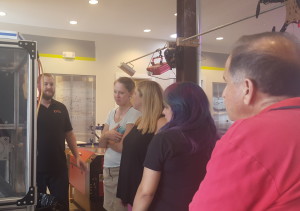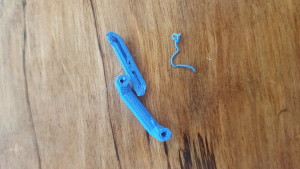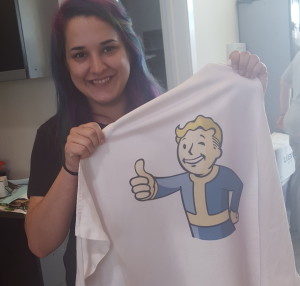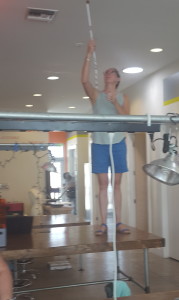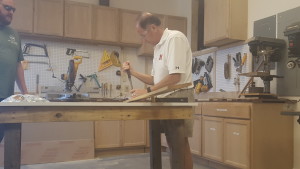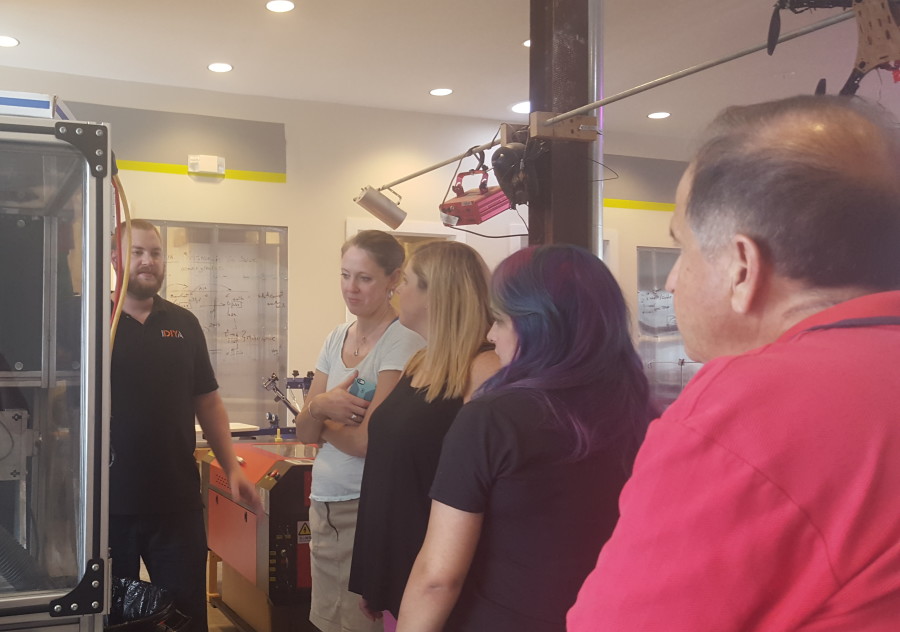
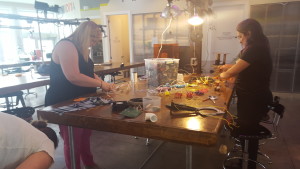
Attendees in an icebreaker activity create a random artifact from their imagination using materials from the “box of inspiration”
Last week IDIYA Labs completed its second teacher training cohort in maker education and design thinking, which included educators from St. Martin’s Episcopal and Trinity Episcopal School. The intensive 5-day 40-hour program was coordinated by IDIYA Director of Education, Andrew Winstead, who has 8 years of public education experience in math and science, and started a makerspace at Sci High here in New Orleans.
IDIYA Labs piloted its teacher training program earlier this year, which was a 16-week grant-enabled program that resulted in awarding Mildred Osborne an in-school makerspace and an awesome trophy that was built in-house by IDIYA Factory.
Andrew hopes that training educators in maker curricula and pedagogy will instill inventiveness, imagination, and creativity in their teaching and ultimately their students. If you are interested in this program, please be sure to sign up for our July 18 – 22 training.
Intro to Makerspaces and CAD – Day 1
The week of training began with a tour of IDIYA and overview of the on-site laser cutters, 3D printers, 3D scanners, sewing machines (many of which are antique), direct to garments printers, and various tools in the woodshop.
The group got to work with their hands and make 3D models of keychains bearing their names. We also screened a documentary which discusses the maker movement and compares “making” to a “fluid and improvised” jazz piece.
3D Printing and Laser Cutting – Day 2
While our keychains from Day 1 were 3D printing on the side, we learned about various 3D printing technologies available, including stereolithography (SLA), digital light processing (DLP), and additional methods. Some technologies are extremely futuristic, such as DLP’s slow lifting of a physical object from a vat of glowing liquid, whereas laminated object manufacturing (LOM), which involves sheets of paper and sounds comparably low-tech, produces spectacular 3D printed articles and is capable of printing color.
We measured our laptops with calipersto and built customized 3D models of laptop stands in Fusion 360, a program that is free for educators.
IDIYA’s Shop Manager, Joe Cantu, delivered a demo in laser cutting. The group learned to export and edit a digital file and prepare it for two different laser cutters. After firing the lasers, we assembled the cut cardboard into an elegant box that reads, “Makerspace Teachers Rock!” Check out our classes if you are interested in this laser cutting class.
Day 3 – Circuits and Sensors
On day 3, we jump started our minds with a discussion on creativity in the school system and how the traditional classroom learning experience can inhibit creativity.
We then used electronic circuit kits to each make a unique “autonomous drawing bot” consisting of a circuit, motor, and drawing utensil. After making one prototype, attendees switched seats and iterated on the bots of their neighbors. For our second activity, we had to invent an imaginary animal based on the instruction: “Make it move, light up, and make a noise.” Each person in the group presented their creation with a story. This led to rich discussion on how making in the classroom can be used to blend science, art, and english.
Then the group participated in a game that tricks your brain into doing programming exercises. We spent the remainder of the day programming microcontrollers to operate speakers, lights, and direct a servo propelled robot.
Wearable Tech and Coding – Day 4
Attendees used IDIYA’s direct-to-garment Brother GT-361 printer, which can print white and light colors directly onto dark fabrics, to print a graphic of their choice directly onto an article of clothing.
Using an app, the garments were made into augmented reality (AR) wearables. By pointing a tablet at the imprinted graphic, the app casts a video over that space on the tablet display.
We finished the day with more coding practice exercises using several integrated development and learning environments.
Day 5 – Pedagogy and Woodworking
The final day started with a inspirational STEM screening highlighting the importance of project-based learning. After this video, the group was given an activity that challenged them to elevate a coin as high as possible. Some attendees created intricate structures, but Cameron Hadesky from Trinity Episcopal School had the best outcome by ignoring the supplies and simply tossing the coin into the air with a bit of tape to stick to the ceiling. This creative solution by Cameron shows how students will think beyond the obvious to solve a given problem description. This type of problem solving is what is lacking in our current education system.
We touched on some published makerspace education research and then attendees each selected a section of the 2013 Makerspace Playbook and had time to prepare and present their section to the group.
The day progressed with a review of blended learning classrooms; classroom that split into multiple environments. The approach involves rapid feedback for students and constant prototyping of their learning experience.
IDIYA CEO Domenic Giunta showed the group how to use a computer numeric control (CNC) machine, which is a machine that directs a drill bit according to instruction from a computer. In the woodshop, we demoed several tools and learned to recycle wood from a pallet.
The training concluded with a hilarious exercise where each attendee delivered a lesson to the rest of the group, who assumed the behaviors of students. The group shared their feedback and suggestions for every presentation.
The IDIYA Labs Teacher Training program is an insightful experience for those wishing to gain a broad understanding and dive into several areas of maker and STEAM education. As the training progresses, it becomes clear how maker education is an important part of advancing our educational system and economy.
Weren’t able to make this teacher training? IDIYA Labs will be offering another teacher training this summer July 18 – 22. While more and more schools adopt maker education programs, it has become crucial to have staff members with a background in making and design thinking.
